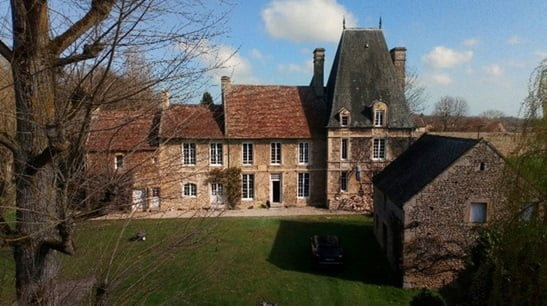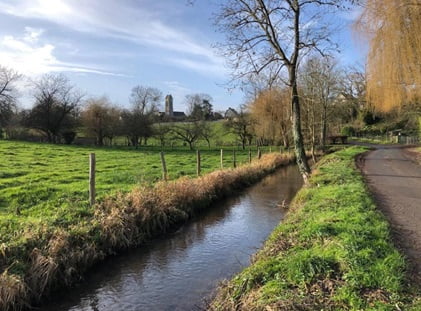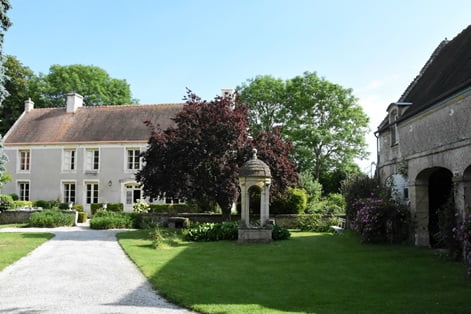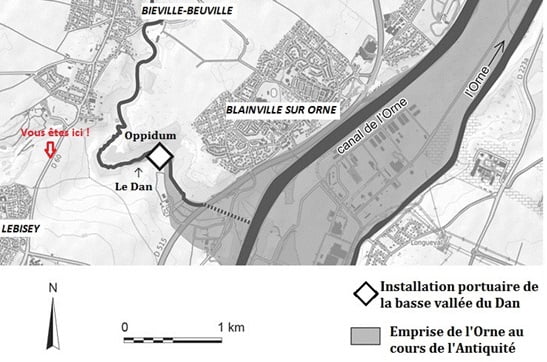Manor of the Valley 17th century
This manor’s main feature is its frontage, which includes two large mullioned windows and a low-ceiling door, all of them decorated with curly bracket carvings at their top. An heraldic lion with a dense mane, taking away either a child or a prey, adorns the right side gable. An eight-paneled turret, which encases the stairs, detaches itself from the façade and soars towards the ridge of the roof. The few Gothic touches in the general construction, as well as the aforementioned details, are a testimony to the late 15th century’s style. It is the former manor of the valley’s seigneur.
The oldest mention of the valley fiefdom dates back to 1473 and narrates the ennobling of a man named Guillaume Lucas, who probably requested the construction of the first manor there. His son Charles Lucas, who paid annuities to the Holy Sepulchre of Caen for « fiefdom lands and habitations set upon Biéville comprising the Manor de la Croutte, » died around 1545.
The first known mention of a « Manor de la Croutte » in Biéville is from 1400. The building was tied to the fiefdom of Rubercy and of The Valley. These were purchased in 1611 by Jacques I of Baillehache, who also owned the D’Outreval fiefdom. In the alignment of the « Manor de la Croutte » (of which only a part of a wall remains), he ordered the building of a second home, namely the Manor of the Valley.
The latter also served as a coaching inn while also being used for agricultural purposes, which explains the number of annexes surrounding it. The manor remained the property of the same family up until the 20th century.
A few feet away on the right, alongside the orchard, 5 British aviators perished in a crash caused by a German Air Defence attack on June 6th, 1944. A ceremony in their memory is organized every year at the Notre-Dame de Biéville church graveyard.





